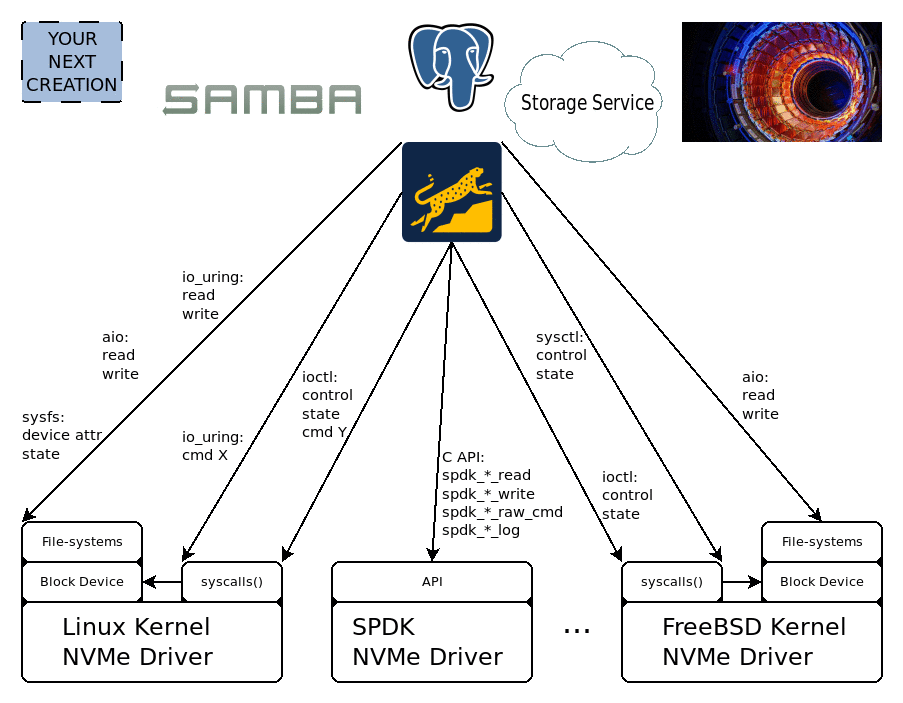Cross-platform libraries and tools for NVMe devices#

A single unified API across platforms, systems, and APIs. Reduce your
code-complexity from n * m (where n is the number of platforms and
m are the number of I/O interfaces on the platform.) to 1.#
xNVMe provides the means to program and interact with NVMe devices from user space.
The foundation of xNVMe is libxnvme, a user space library for working
with NVMe devices. It provides a C API for memory management, that is, for
allocating physical / DMA transferable memory when needed. An NVMe command
interface allowing you to submit and complete NVMe commands in a synchronous as
well as an asynchronous manner.
Convenience functions are built-in for common operations and retrieving parameters essential for I/O applications. Such as your maximum data transfer size and introducing the concept of a device geometry.
The foundation is as such fairly low-level, sitting right on top of a NVMe
driver. The actual NVMe driver being used by libxnvme is re-targetable and
can be any one of the GNU/Linux Kernel NVMe driver via libaio, IOCTLs,
and io_uring, the SPDK NVMe driver, or your own custom NVMe driver.
As such, libxnvme provides a unifying C API for NVMe tool builders,
application developers, and for anyone wanting their host-defined software to
run on more than a single platform.
On top of libxnvme a suite of tools and libraries are provided, that is, a
command-line interface for managing your NVMe device named xnvme, and
lblk for commands specific to NVM Namespaces.
For the Zoned Command Set a command-line interface designed specifically for
convenient management of Zoned NVMe devices named zoned and a C API
libxnvme_znd.h.
To evaluate the performance of abstractions introduced by xNVMe a Fio IO
engine is provided, supporting conventional NVMe devices, as well as
Zoned devices.
Jump right into the Getting Started and with the basics in place you can explore the Tools and the API.
Contents: